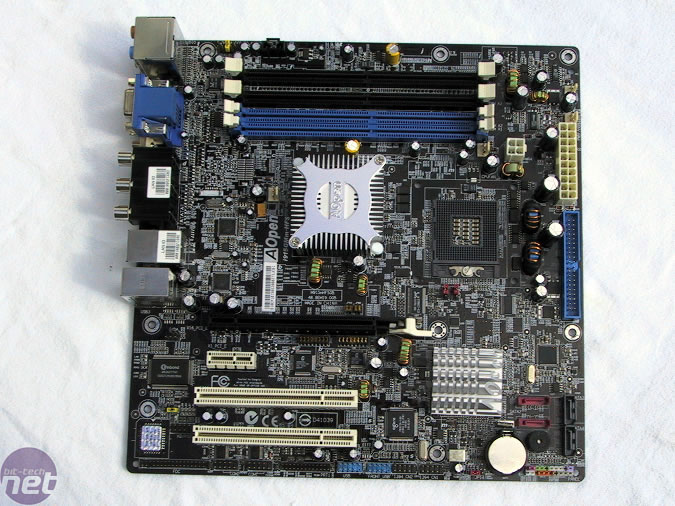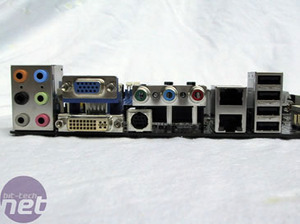
Not wanting to leave you cold on those long winter nights, AOpen take a step into the past as they include a couple of jumpers on the board to select between 400MHz and 533MHz bus CPUs as well as four sets of jumpers for selecting PCI-Express x16 or onboard video instead.
The inclusion of extra SATA ports means you have the option of extensive disk arrays to store all your media, without buying extra PCI cards. The lack of wi-fi networking seems an unfortunate oversight: they have the Pentium M CPU socket and the mobile chipset, all they need is to integrate a wireless LAN into the board and you have a Centrino setup. Not only that, but it adds options for your Media Center – more people have wireless than a second home network and would prefer less wires routed around their living room.


The only option for mice is USB, which is not unreasonable in 2005. You can buy a new USB mouse for next to nothing these days, and you could probably chuck in a new USB keyboard for the same price as a PS2 to USB adapter anyway. For a micro ATX motherboard, it's packed with all the connectivity you'd ever require for a normal home or small office user.
High Definition sound in a Media Center not only makes sense but it saves you money on buying a soundcard. Sure, you can go buy your Creative X-Fi or Audigy for EAX if you want that, but for 8 channel HD audio playback in movies or music it will suit most people. Unfortunately, the drivers provided don't offer any Dolby options like Dolby Live or Virtual Surround technologies, but you do get optical S/PDIF in and out using the provided adapters as well as six 3.5mm audio jacks for analogue outputs.


The front panel pins are colour co-ordinated to provide ease of identification when plugging in your power/reset switches and LEDs.

MSI MPG Velox 100R Chassis Review
October 14 2021 | 15:04






Want to comment? Please log in.